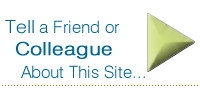About GrantCom
 Read about who we are, our diversified backgrounds and the communities and causes we serve. Our mission is to help in growing client organizational sales and revenues and returning a portion of our profits to individuals and organizations that need our help the most.
What We Do View how we have brought business development and sales solutions to the table for clients since 1992. How can we help you achieve the results you need and expect? From an integrated communications perspective of cross-pollination of the marketing and visual identity, accross both traditional and new media vehicles.

|
Quick Terminology Check
Has someone lost you during a conversation? Check here to see if
"home page" is listed... Following are key identification definitions in evaluating graphic web design. These terms are used by most professional firms, so you will be on even footing as you begin to evaluate potential solutions. These terms are not all-inclusive, and are meant to be used a a fast familiarization tool.
We also offer a comprehensive web terminology
glossary, offering a more in-depth profile of the industry as a whole. This
includes 115 pages of data on subjects ranging from key staff members and their
specific responsibilities, the production process, content management philosophies,
database terminology and other key criteria to evaluate. We have had very positive
feedback for those companies who have hired a complete web team - all based from
our glossary! |
Click here for In-Depth Glossary and technical definitions: |
Image Map/
Home Page | A way of allowing visitors to navigate into
and through your web site through a single
graphical representation or through a series
of informational points that lead to additional
pages of content. | Flash | A scaleable compressed algorithm developed
by Macromedia that creates an animated entry
spot. Used extensively for "WebMercials";
key selling points of your organization’s
products or services. Based on overall file
size, sound may also be appropriate to further
reinforce messaging. Flash is now installed on over 93% of browsers
worldwide. The download for this plug-in is
approximately 150K, or 12 seconds on an intermediate
modem speed on an average Internet traffic
day. | Icons/
Site Navigation | Navigational "buttons" that allow
visitors access to the sub-pages through graphical
"click on" buttons. Also known as
"GUI", or Graphical User Interface. Mouseovers are a design element within site
navigation; when a cursor is positioned over
a navigational graphic, it will change effect.
Both programming and design of these elements
can add visual interactivity with the user. | Headers | Serves as a graphical page heading so users
can quickly confirm that what they clicked
on led them to the correct place. Headers
for each sub-page match the same graphical
representation of the corresponding navigational
element, creating continuity throughout the
site. A trend incorporating Flash elements is also
currently being seen. The title bar at the top of the page, formerly
used as a page identifier, is now used for
the search engines. | Background Tiling | Acts as a graphical 3-D watermark for your
page, and can also reinforce any primary graphical
imagery you are trying to convey to a target
audience. Simple corporate logos can be effective,
while graphical backgrounds can enhance your
statement to your target segments. A solid color can also be extremely effective,
speeding download while maintaining a "clean"
look and feel. | Photos | Ideally scanned from negatives, transparencies
and 35MM, photos can greatly enhance the visual
graphical appeal of your web site with minimal
expense. The goal is to create a high resolution
photo with minimum byte size; Grant Communications
can accomplish this through the use of advanced
MAC-and PC-based applications. Preferred file types (if electronic) are: | Customer Response
Form | The ultimate goal of any marketing program
is the collection of qualified leads. A form
is far more effective than a simple request
for EMAIL, due to the limiting factor of responses
from customers. A form is far more interactive
and engaging than a free form request for
information. | HTML | Hypertext Markup Language. HTML is the universal
programming language that crosses all platforms
on the Internet, allowing the ultimate in
interoperability of your marketing message. HTML is not a formatting tool, though it
does have some formatting capabilities. Leading,
kerning and tracking are not supported, thus
limiting total control on both viewing and
printability. | HTML Coding and
Testing | This is the actual text information that
is converted from some other electronic format
and is placed on the web for customer’s review.
This can include information about your company,
products, services and complex tables that
provide technical specifications on your products. | HTML Layout | The process of integrating supplied text
with the graphical interface/site navigational
elements, as well as all scans, screen captures
and other graphics. | CSS | CSS, or "Cascading Style Sheets",
allows far greater control in the physical
attributes within HTML. Uniform font types
and sizes can be mandated, bypassing user
control on altering text size. This has a
great benefit in more tightly controlling
what a visitor to your site can physically
see, and also allow a site-wide change in
font use by changing the css file. Netscape 4.05 and higher does experience
inconsistencies in how it views the css file
attributes, causing an ongoing design challenge. | DHTML | Dynamic HTML was accepted as an augmentation
of HTML by the World Wide Web (W3) Consortium
in 1998, and is supported by V. 4.0 browsers
and higher. Absolute positioning using layers
and dynamic content flying in by a controlled
timeline sequence became possible, though
with difficulty using Netscape 4.05 and higher. | Site Marketing | The post-launch marketing of your site is
more important than your actual site itself.
Your customers must be provided with easy
means of access to your site, through registering
with all search engines. Additionally, registering
of key search words (the primary means of
customers accessing your site) must also be
done, allowing ease of access through multiple
avenues. Key components for effective search engine
marketing include: - Title bar
- ALT tags
- Hidden comment fields
- Text corresponding to the title bar
- Description Meta tag
- Key word Meta tag (3 to 4 phrases of 2
to 3 words each)
- Etc. (This is when you call 603-715-5445)
| Animations | Creates visual appeal through motion, thus
carrying your audience further into the web
site. Also reinforces specific educational
goals you are trying to accomplish with your
audience through visual reinforcement. Highly-effective
animations can be created by Grant Communications,
including cycling company logos, graphical
images and banner ads with small byte size. An alternative to gif animations can also
be created using the far-clearer and smaller
jpg file format for pictures (pixel/raster-based
images) through the use of a timeline on a
loop. | Web Servers | 4 main web server operating systems (each
with a host of server software) exist on the
market today; UNIX, MAC, NT and Linux. The 2 main types as of today (though Linux
is growing rapidly) is UNIX and Microsoft
NT. Each handles file management and information
processing differently. UNIX is faster, NT
is easier to modularize. The biggest difference,
though, that anyone will see is in the programming
of interactive databases for these 2 systems. UNIX programming is based on CGI and Perl;
complex languages where code is built in one
file that can be 100,000 lines long. The detriment
to this is that the scripts need to decompile,
slowing a server down. Additionally, debugging
100,000 lines of code, is, shall we say, tedious. NT programming is based on Active Server
Pages (ASP), which allow a series of scripts
to run. A more complex database program may
consist of 20 related files of 20 lines of
code each. Faster to build, faster to debug.
And no compiling, which speeds up server speed. Finally, our line is on LAMP development using PHP scripting on the Linux servers. LAMP (Linux Apache MySQL PHP) development has become synonomous with lightning fast server and client response times, relatively inexpensive engineering costs, scaleability and speed. | Shopping Carts | Using CGI/Perl, PHP (Linux/UNIX server) or ASP (NT server),
a series of scripts interact with a database
sitting on a server from a user’s (client’s)
browser. Information is entered in temporarily,
allowing calculations to be performed, multiple
items to be selected and final on-line transaction
processing to occur. | Browsers | Version 4.0 and higher browsers dominate
the market, installed on over 97% of all computers
worldwide. These browsers support all the
primary elements you have come to expect;
frames, tables, DHTML, jpg "Hot Spots",
Flash integration, javascript interactivity,
and much more. This is the current design
level for professional firms. Each browser will look at a page slightly
differently; colors may be a touch off (even
using "web safe" colors), and printing
layout may also shift. Editorial:
2 main survivors of the so-called "Browser
War" emerged in early 1997. Netscape
3.0 was market leader, supporting Java-enhanced
elements such as mouseovers through spaghetti
code. By mid-1997, Microsoft became determined
to dominate what it once considered a "passing
fad", and pushed it’s engineers to design
a true modular browser engine, and launched
Internet Explorer 3.0 soon thereafter. With the stakes high, new versions to these
2 engines accelerated. Netscape received much
corporate support through it’s marketing of
a proprietary server management tool, and
soon launched the V. 4.05. Because of it’s
code design, any alterations from this point
forward soon showed flaws in it’s handling
of HTML as approved by the W3 consortium,
and caused many headaches for design firms
worldwide. Then Microsoft announced it’s server solution;
NT. Shipping with this product, as well as
pre-installed on all Windows operating systems,
was their new browser; V. 4.0. Database work
for the web, once considered the property
of programming geniuses only, now showed Microsoft’s
strengths. Using Visual Basic as the interface
language, any mid-level programmer could start
to program for database interactivity using
modular ASP code. Today, all sites need to be designed for
Netscape 4.0 level for operability. "If
it works in Netscape, it should be fine in
IE. If it works in IE, it may not work in
Netscape". Note: The Beta for Netscape 6.0 was released
in May, 2000. Many current HTML conventions
using DHTML (hidden vs. visible layers, etc.)
appear to NO LONGER be supported. We have
discontinued using these design features until
we have received a response from Netscape
or the users groups tied to the W3 Consortium… | Maintenance
| The ongoing updating to your web site, which
should be reviewed on a minimum of a quarterly
basis. Files sometimes become corrupt on a
server, so it’s always helpful if you know
what the current status of your site is. A simple addition to a "What’s New"
section, for instance, will not only give
updated information to potential clients,
but will also help with some of the search
engines. Some of the engines check on file
date, giving preference to not only the oldest
sites, but also to those sites that have current
file dates. | Java Banners | Creates visual moving appeal within text
formats, and reinforces any subliminal messaging
that you are attempting to impart. | Site and Content
Security | Various methods are available for securing
access to data, file downloads and other specific
applications. Common applications for a secured
certificate are shopping cart systems. |
Many other services are also
available; from internal search engines, through
maintaining internet/intranet presence, chat
room designs and 3-D imaging, threaded discussion
boards, and helping you get established with
an Internet Service Provider (ISP), web-print-design.com
acts as your reference point for any of your
marketing, advertising, and Web presence activities. 
Category: Home Page
|
Contact us today for business consulting
Follow Us
Want to learn more about us? Follow GrantCom LLC, our clients and our companies on Facebook, Twitter, Google+, Blogspot and Linkedin.
|



 Read about who we are, our diversified backgrounds and the communities and causes we serve. Our mission is to help in growing client organizational sales and revenues and returning a portion of our profits to individuals and organizations that need our help the most.
Read about who we are, our diversified backgrounds and the communities and causes we serve. Our mission is to help in growing client organizational sales and revenues and returning a portion of our profits to individuals and organizations that need our help the most. View how we have brought business development and sales solutions to the table for clients since 1992. How can we help you achieve the results you need and expect? From an integrated communications perspective of cross-pollination of the marketing and visual identity, accross both traditional and new media vehicles.
View how we have brought business development and sales solutions to the table for clients since 1992. How can we help you achieve the results you need and expect? From an integrated communications perspective of cross-pollination of the marketing and visual identity, accross both traditional and new media vehicles.



